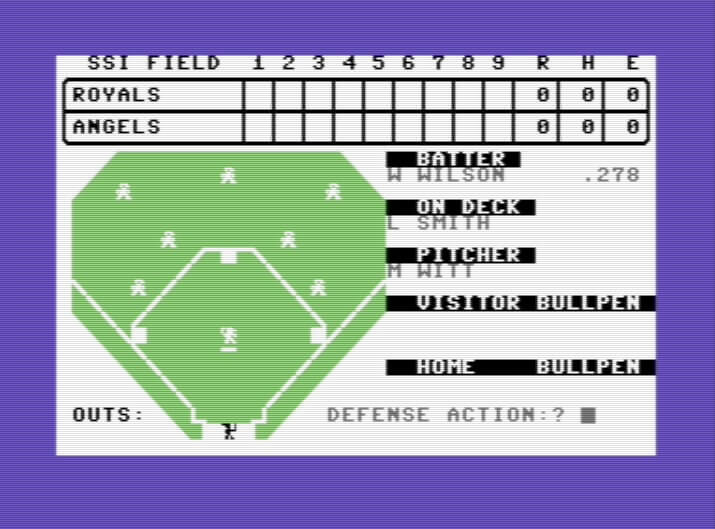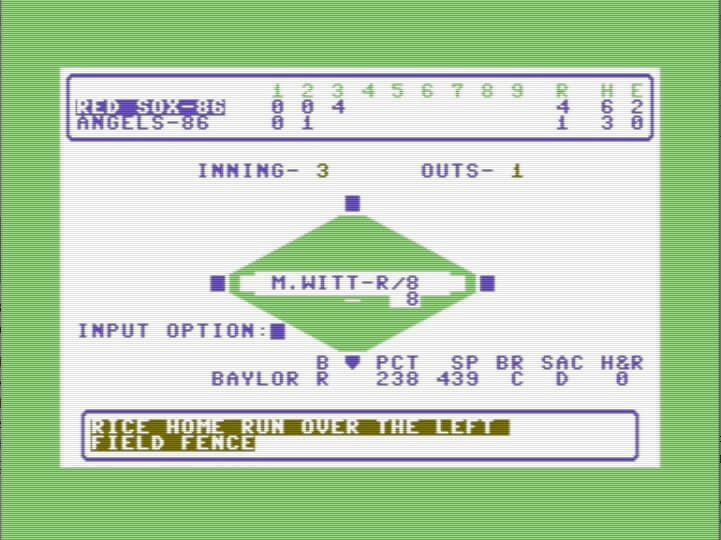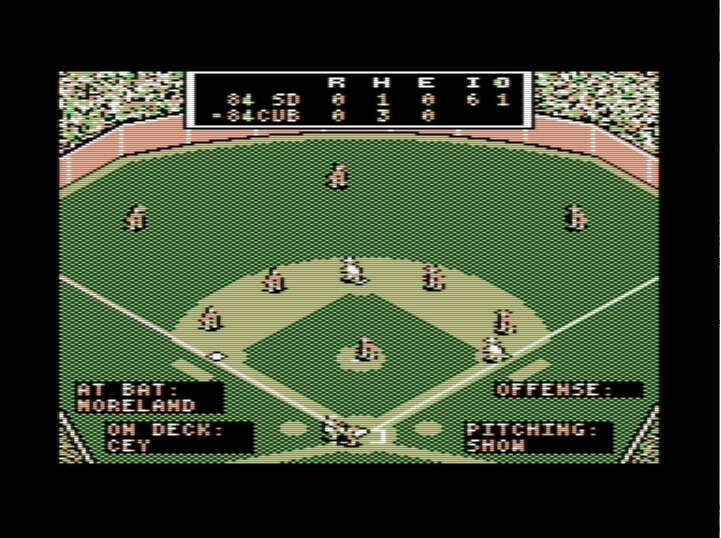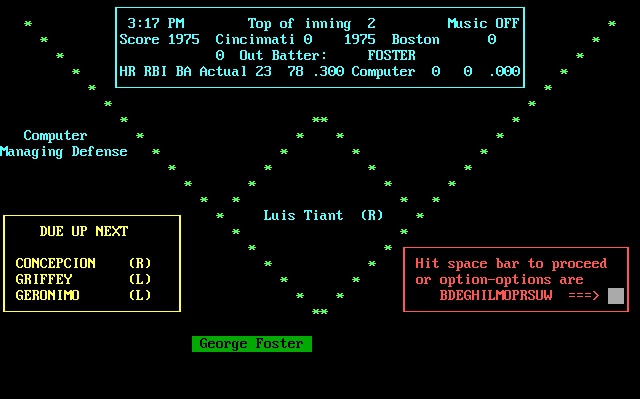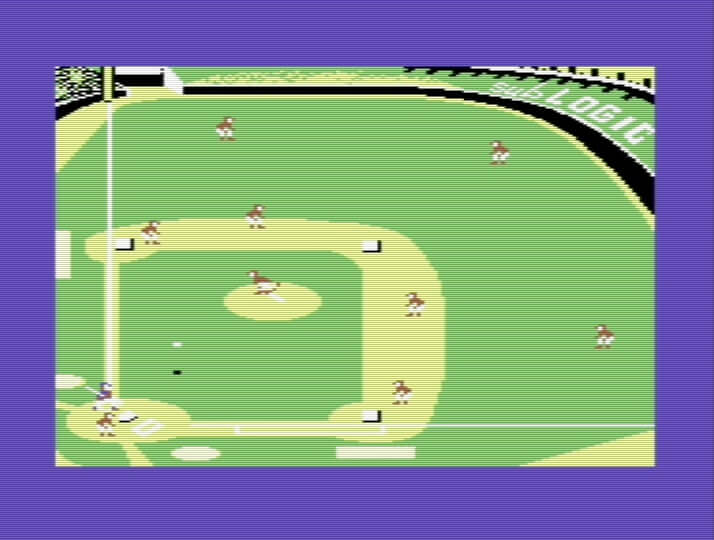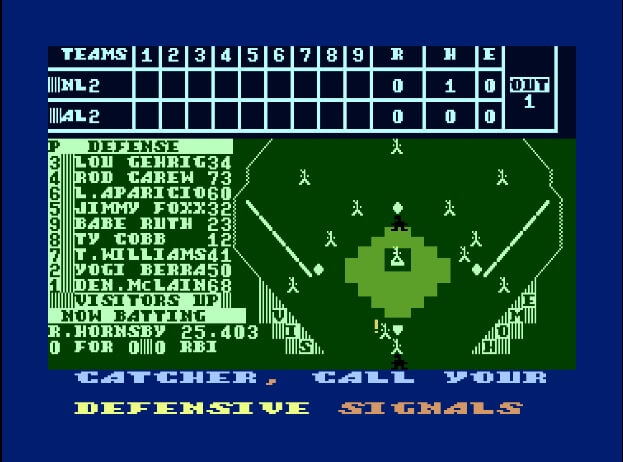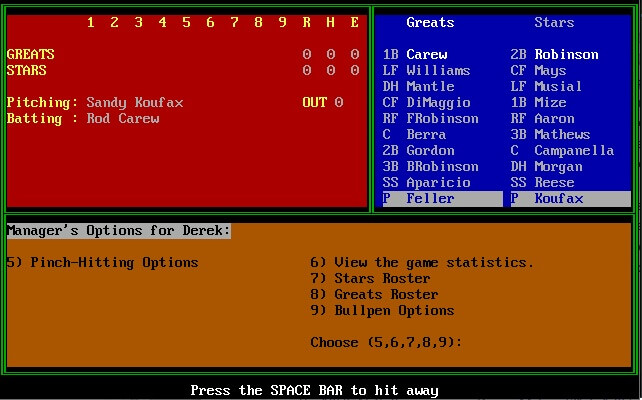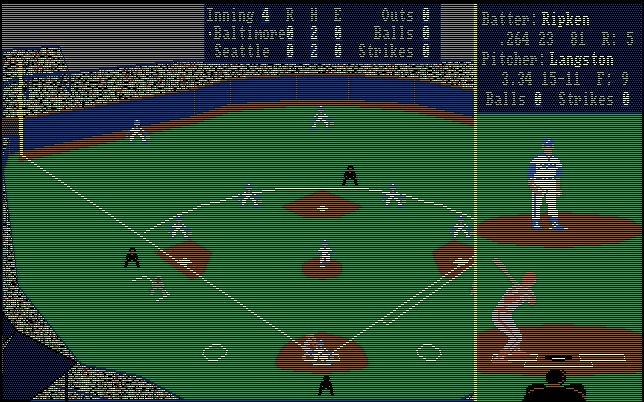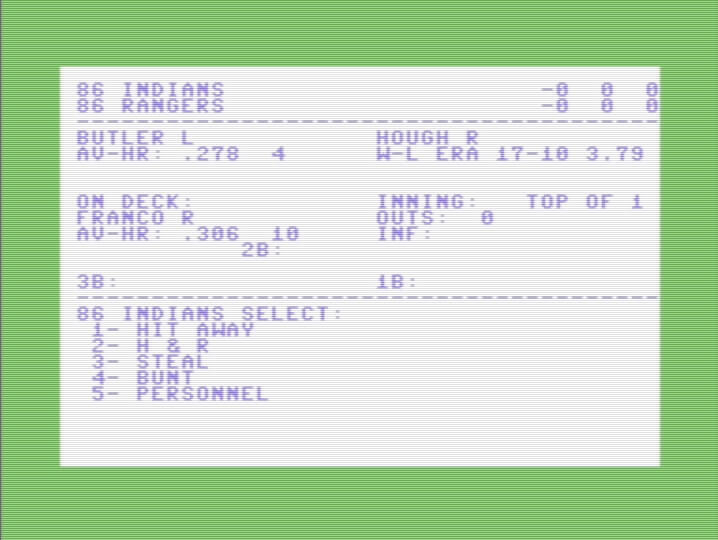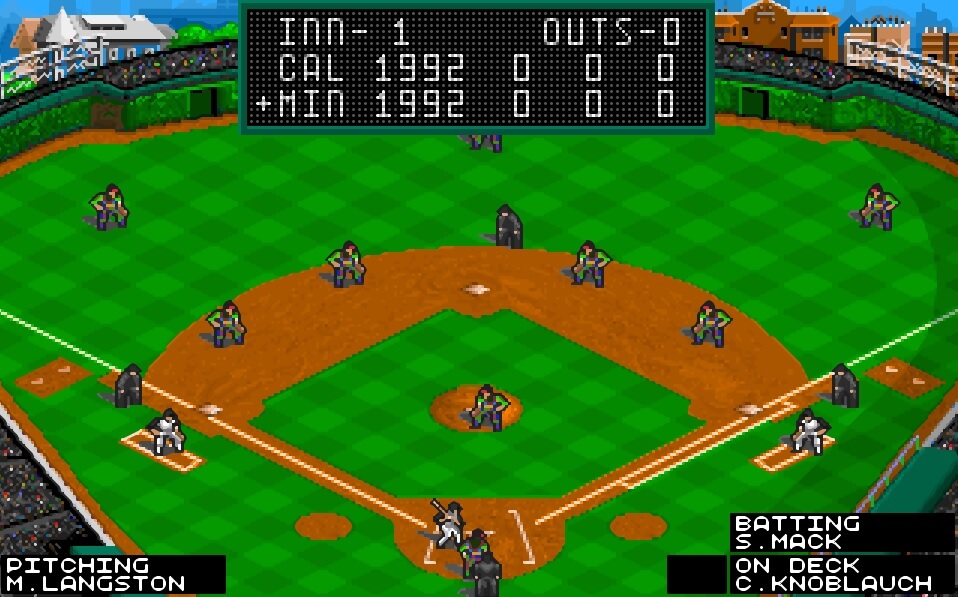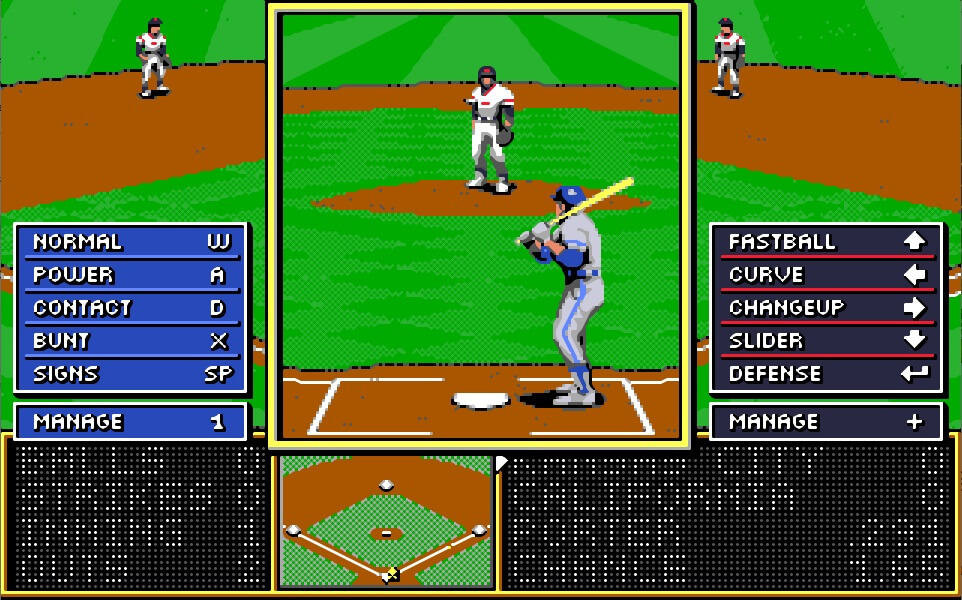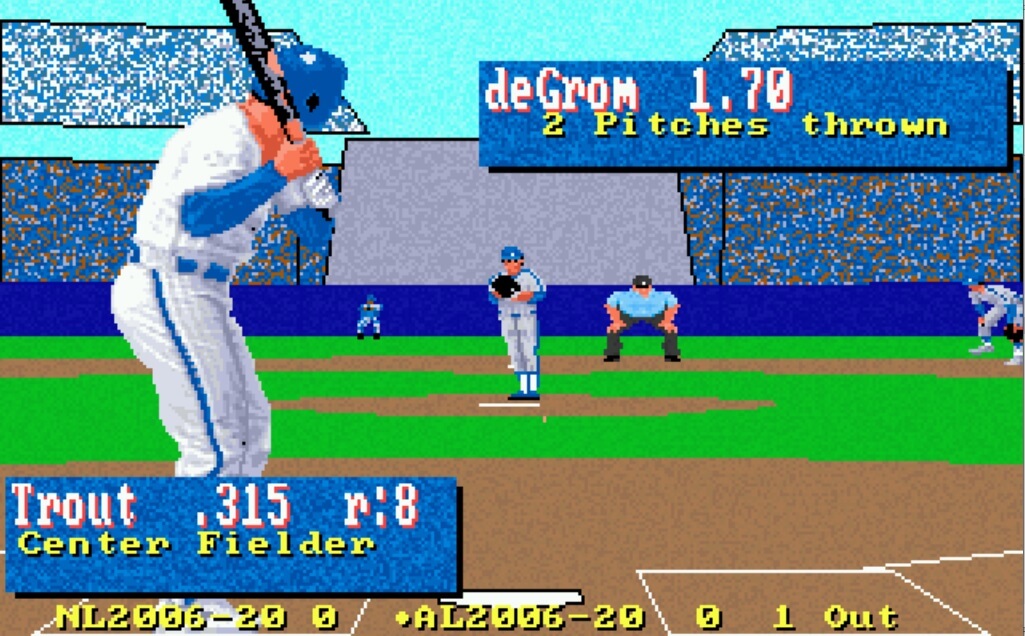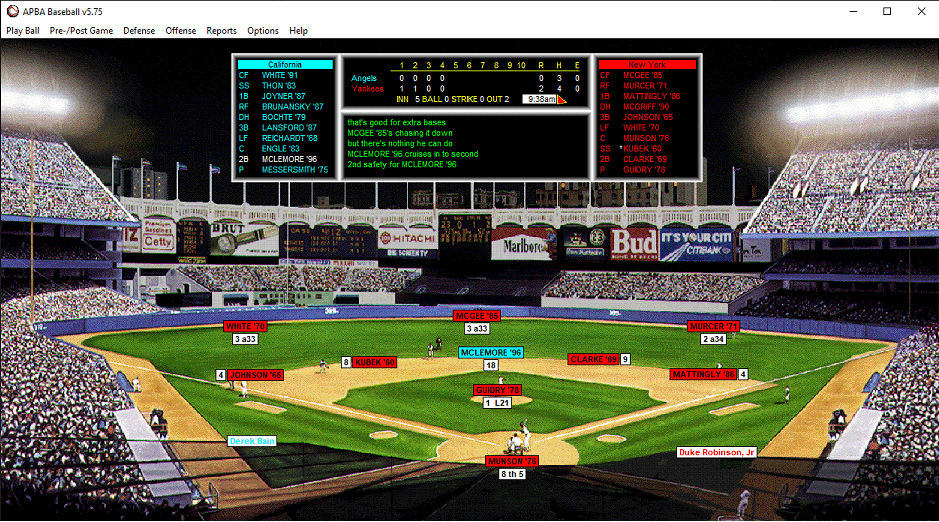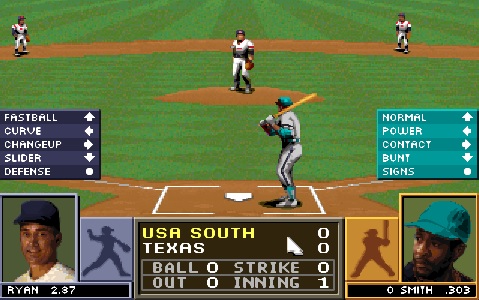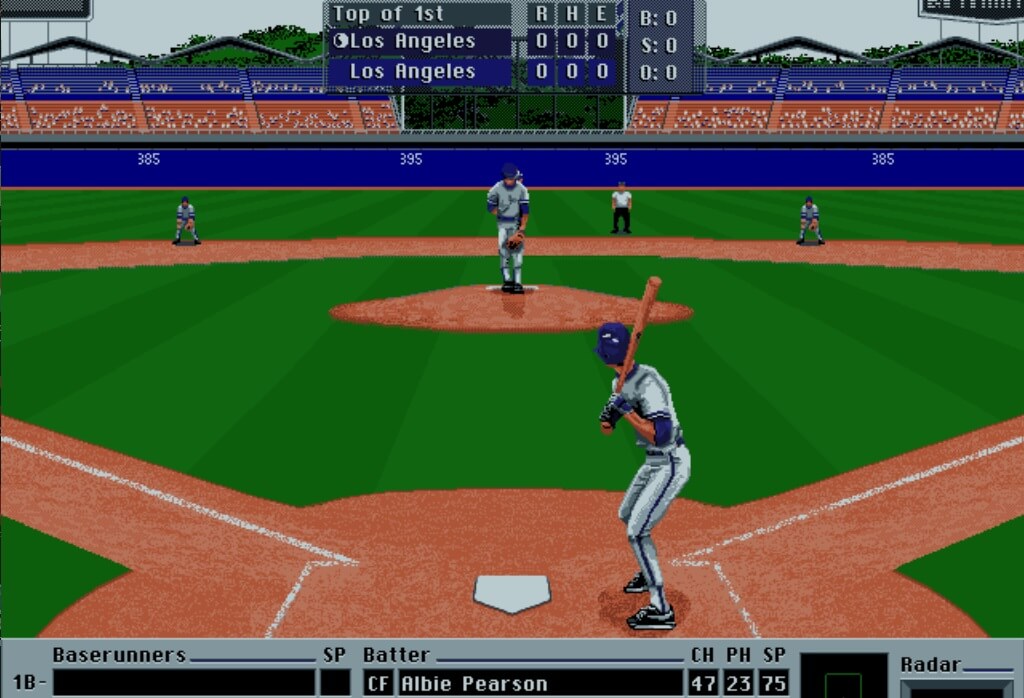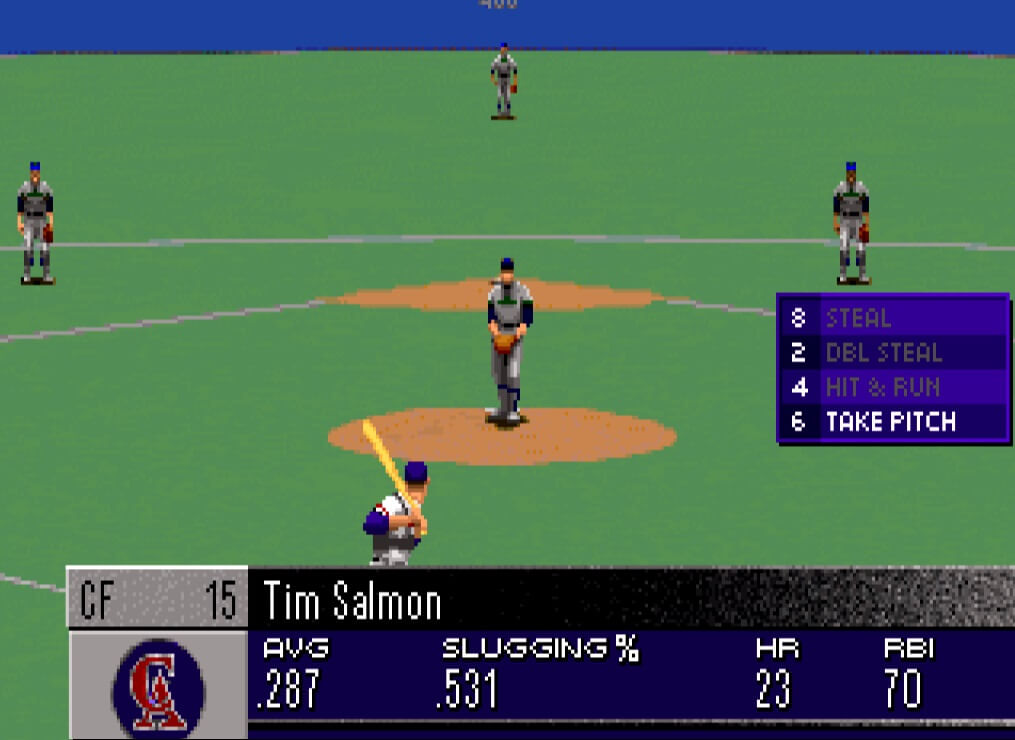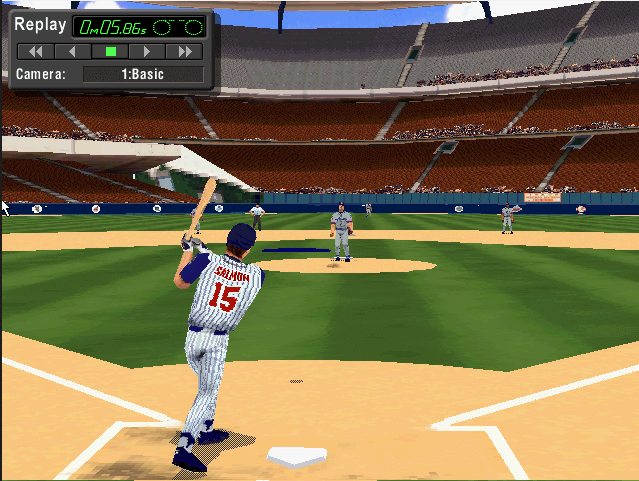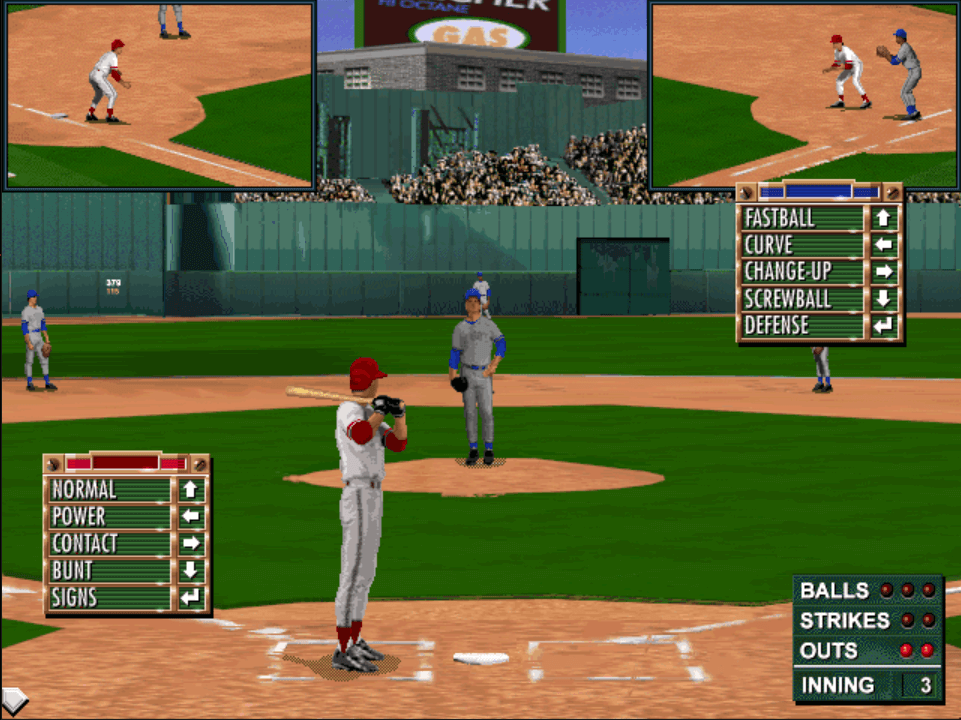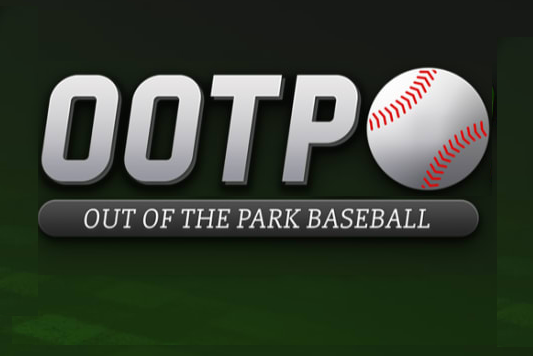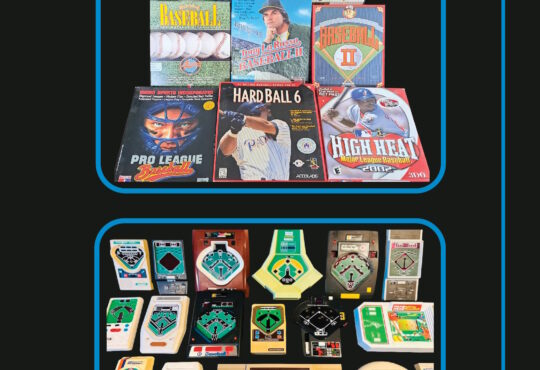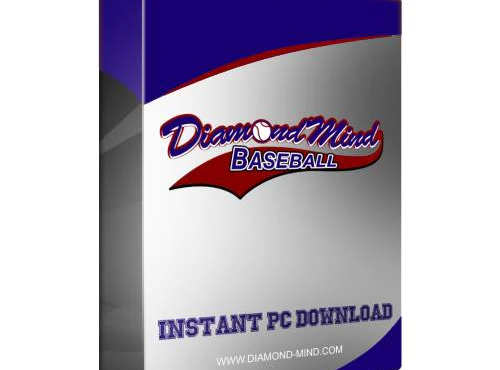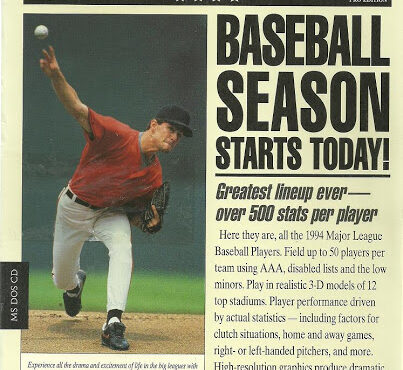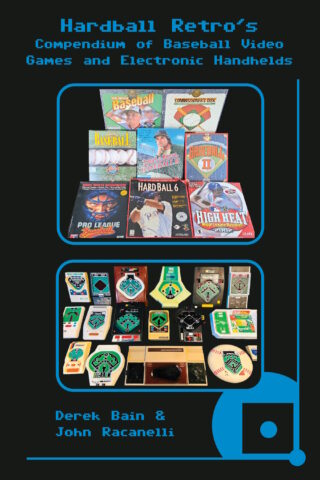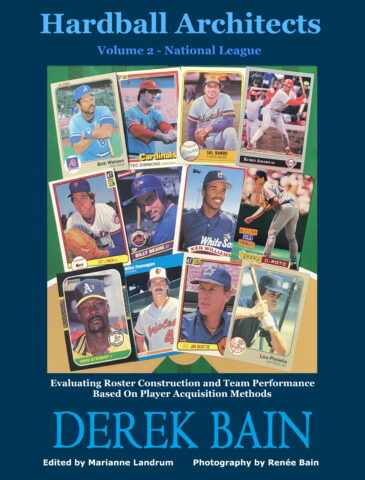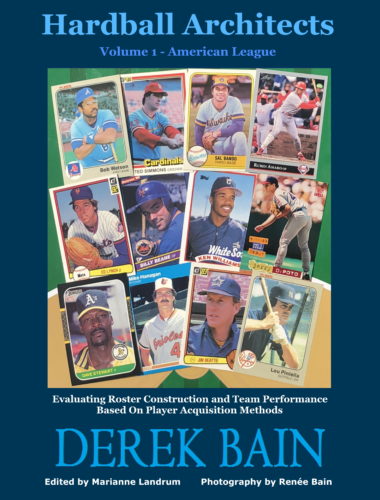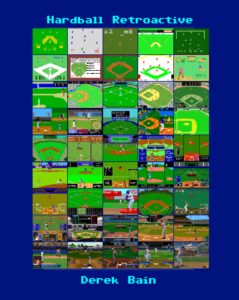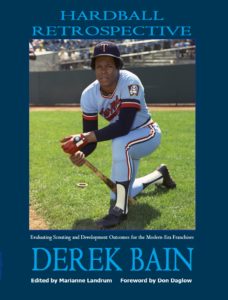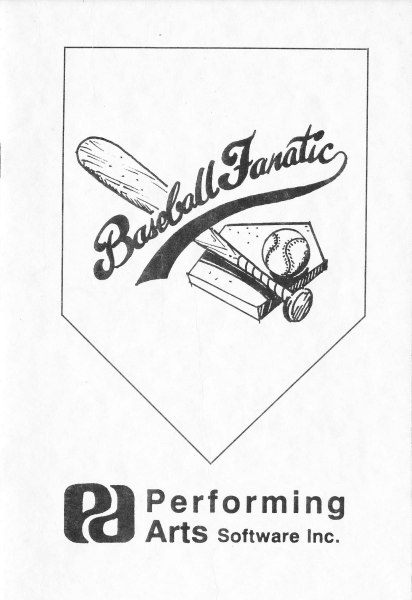
Retro Computer Baseball Game Review – Baseball Fanatic
This is the twenty-first entry in a series focusing on computer baseball simulations to supplement the chapter “Play Retro Baseball Video Games In Your Browser” from my Hardball Retroactive book along with the corresponding post at Baseball Analytics. The series focuses on baseball simulations – games in which the primary emphasis is on managerial strategy and the ability to replay entire seasons with a degree of realism. Baseball video games that are strictly arcade representations of baseball (based solely on reflex and hand-eye coordination) are excluded.

Publisher – Performing Arts Software
Release Year – 1986
Platforms – Apple ][, IBM PC
Credits
Unknown – if anyone can provide this information, please post a Comment and I will update this section accordingly.
Review
So much for chronological order.. I skipped Baseball Fanatic early in my series of retro computer baseball games reviews but I’m finally able to revisit it now. The chief reason for omitting the game on my first time through the lineup is that I no longer possessed the game disk. I purchased the game circa 1986 or 1987 for my Apple ][e computer. I still have the manual and scanned a copy to help with the preservation of game’s existence. However I regrettably sold my Apple computer along with the software in the mid-1990’s shortly after purchasing my first IBM PC clone (a Micron tower). I don’t recall spending a lot of time with Baseball Fanatic – MicroLeague Baseball, APBA Major League Players Baseball and later Earl Weaver Baseball consumed most of my leisure time back then. When I started writing my Retro Review series, I remembered Baseball Fanatic and located my manual but I couldn’t find any references of the game on the Internet. The lone proof of it’s existence online was an advertisement that I tracked down in the April 1987 issue of Computer Gaming World along with a brief blurb about the game:
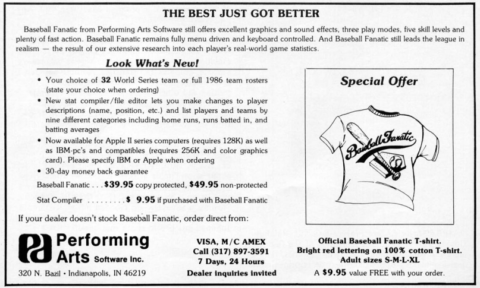
I finally tracked down a demo of the IBM PC version of the game which only allows the user to play two innings and most of the other features are disabled. You can view my playthrough video on my HardballRetro Youtube channel:
Still no luck locating the Apple ][ version or the full version of the IBM PC edition of Baseball Fanatic.. but the demo at least allowed me to reacquaint myself with the game almost four decades after my first encounter. Unfortunately, it matched my initial recollection – a fairly bland simulation of the National Pastime that doesn’t do anything particularly well. There is no “one-pitch” mode so you have to slog through every pitch of every at-bat. This might have been a tolerable exercise if the play-by-play contained any variation or imagination. Baseball Fanatic came with 32 World Series teams from the 1960’s, 70’s and 80’s or a 1986 season disk. An optional stat compiler / file editor disk was sold separately.
If you decide to play a single game, you can choose from four “playing levels”: Super Slugfest, Slugfest, Pitcher’s Duel and Average Big League to adjust the scoring production and strategies to be utilized on a per-game basis. Once the game begins, the defense must select the pitch type and location. The manager on offense has to guess the pitch type and location, then the result is displayed. Instead of playing individual games, there is also an option to “Watch the Scoreboard”. The file editor allows you to modify player characteristics.
Ratings
Graphics – [1] While I don’t have the Apple ][ version of Baseball Fanatic, my recollection is that the game screen was ordinary and consistent with the baseball sims of that era: Full Count Baseball, Monday Morning Manager, Avalon Hill Pro Manager, Radio Baseball and the APBA Major League Players Baseball. The color scheme for the IBM PC version is off-putting – a mix of browns and greens, a generic stadium and players with minimal animation.
Sound – [1] A few bleeps and bloops.. with two runners aboard, I was treated to a bleep-bloop rendition of a “Here We Go!” chant.
Strategy – [1] There’s not much strategy going on here.. You’re guessing at pitches and can attempt to bunt or steal a base. On defense I could pitch out with a runner on base or issue an intentional walk.
Artificial Intelligence – [1] I’m only able to play two innings at a clip so this limits my ability to determine if the computer AI is adequate.
Box Score – [1] Perhaps it’s a limitation of the demo but when my two-inning game concluded, I was booted back to the main menu after pressing a key (no option to view a box score). While setting the lineups pre-game, Baseball Fanatic displays offensive statistics in a peculiar order: at bats, hits, home runs, doubles, RBI, average and triples!
Rosters – [1] – The Create a New Team option allows you to build a ballclub from scratch. However you are limited to a 20-man roster (the World Series teams are bare-bones – only 11 batters and 5 pitchers per squad!). You do not have the ability to trade or draft players. Each player is assigned a position, then you enter their speed, power and batting average ratings. Batters additionally get a fielding rating. The sole rating for pitchers is their “ERA range”.
Statistics – [1] – Depending on your preference when plunking down your hard-earned cash for Baseball Fanatic, you received a game which included 32 World Series teams from the 1960’s through early 1980’s or a 1986 season disk with 26 team rosters. Addition data disks may have been available for purchase and an optional stat compiler / file editor disk was offered as well. I don’t have access to the stat compiler and the manual fails to specify what statistics are tracked.
Usage/Injuries/Ejections – [1] – Pitchers will become tired in the game according to the manual – “The computer keeps tracks of the number of pitches thrown by each pitcher and there is a fatigue factor, so watch for signs that your pitcher is tiring late in the game.” Injuries and ejections do not occur as far as I can tell.
Ballparks / Park Factors – [1] – Baseball Fanatic only depicts a generic stadium in-game and the manual does not mention anything about ballpark factors.
Commentary – [1] – Play results appear below the scoreboard at the top of the screen. The play-by-play is extremely bland with mostly one or two-word responses.
Scale: Ratings from 1 (worst) to 5 (best)
Total Score: 11 out of 50
Observations
Baseball Fanatic offers a straightforward pitch-by-pitch simulation but doesn’t do anything particularly well. In a marketplace with five very similar titles, a primarily text-based simulation had to offer something special to separate itself from the rest of the pack. Apart from my desire to track down this game nearly forty years later for the sake of fully documenting my favorite gaming genre, I cannot recommend Baseball Fanatic.
Please add a comment below if you spent a significant amount of time and/or have any recollections of Baseball Fanatic.
Screenshots
















Articles in the Series
Additional Links
DOS Game Zone – play Baseball Fanatic (IBM PC demo) in your browser:
https://dosgamezone.com/game/baseball-fanatic-525.html
Playthroughs – Hardball Retro
IBM PC version:
Wilson, Johnny. “Baseball Game Survey.” Computer Gaming World. Volume 36, April 1987, p6-9, 42-44.
http://www.cgwmuseum.org/galleries/issues/cgw_36.pdf
About the Author
I am a New Jersey native with a passion for baseball, statistics, computers and video games who enjoys spending quality time with his family.
“Hardball Architects – Volume 1 (American League)“, published in July 2020 and
“Hardball Architects – Volume 2 (National League)”, published in April 2022, examine the trades, free agent acquisitions, draft picks and other transactions for the 30 Major League Baseball franchises, divided into a 2-volume set. Both books are available in paperback and digital (Kindle) format at Amazon.com. All key moves are scrutinized for every team and Sabermetric principles are applied to the roster construction throughout the lifetime of the organization to encapsulate the hits and misses by front office executives. Team performances are analyzed based on transaction type with graphs depicting the WAR (Wins Above Replacement) in every decade. Individual results for each player-transaction is charted over the duration of their stint with the franchise. Every team chapter includes All-Time Rosters and Single-Season Leaders based on transaction type. The Team Trade Record chronicles the WAR and WS (Win Shares) accumulated by players acquired in comparison to those traded to opposing teams. The opening chapter is devoted to the Evolution of the General Manager and incorporates a discussion with former Dodgers GM Fred Claire (along with former Angels and Red Sox GM Mike Port and current Reds GM Nick Krall in Volume 2) on a variety of front office topics.
“Hardball Retroactive”, published in June 2018, is available in paperback and digital (Kindle) format at Amazon.com. Hardball Retroactive is a modest collection of selected articles that I have written for Seamheads.com along with my Baseball Analytics blog since 2010. Exclusive content includes the chapter on “Minors vs. Majors” which assesses every franchise’s minor league successes and failures in relation to their major league operations.
“Hardball Retrospective” is available in paperback and digital (Kindle) format at Amazon.com. Supplemental Statistics, Charts and Graphs along with a discussion forum are offered at TuataraSoftware.com. In Hardball Retrospective, I placed every ballplayer in the modern era (from 1901-present) on their original teams. Using a variety of advanced statistics and methods, I generated revised standings for each season based entirely on the performance of each team’s “original” players. I discuss every team’s “original” players and seasons at length along with organizational performance with respect to the Amateur Draft (or First-Year Player Draft), amateur free agent signings and other methods of player acquisition. Season standings, WAR and Win Shares totals for the “original” teams are compared against the real-time or “actual” team results to assess each franchise’s scouting, development and general management skills.
Don Daglow (Intellivision World Series Major League Baseball, Earl Weaver Baseball, Tony LaRussa Baseball) contributed the foreword for Hardball Retrospective. The foreword and preview of my book are accessible here.
“Hardball Retrospective – Addendum 2014 to 2016” supplements my research for Hardball Retrospective, providing retroactive standings based on Wins Above Replacement (WAR) and Win Shares (WS) for each “original” team over the past three seasons (2014-2016). Team totals from 2010 – 2013 are included for reference purposes. “Addendum” is available in paperback and digital (Kindle) format at Amazon.com.
